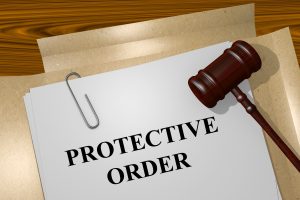Uncontested divorce
July 6, 2022Arraignment
April 15, 2023
In our extensive criminal defense and family court practice, we often come across Order of Protection violations. In New York State, two types of Courts may issue Orders of protection – Criminal Courts and Family Courts. For the Criminal Court Judge to issue an Order against any person, that person – the Defendant – must be first arrested by police. If the circumstances of such a criminal case involve some violence directed at another person or call for the protection of another person or persons, the Criminal Court judge at the first Court appearance will issue an Order against the Defendant and in favor of the complaining witness. Such an order may be a full stay-away order prohibiting the Defendant from any contact with the complaining witness whatsoever, including electronic contact on social networks, or a limited “do not harass” Order of Protection allowing the communications between the Defendant and the complaining witness but prohibiting committing new crimes or certain violations, such as harassment, against the complaining witness.
Even if the Court initially issued a full stay-away Order of protection, it is possible to make an application at a later date to the Court to modify such an order, making it a limited Order of protection based on the additional information and/or changed circumstances, especially with the consent of the protected person.
It is important to understand that an Order of Protection is a Court order, so it can be vacated or modified only by the Court. Even if the protected person reaches out to the Defendant and starts the communication, the Defendant against whom there is an existing Order must ignore such a request and obey the order until it is modified or vacated by the Court.
If the Defendant and the complaining witness in whose favor the Order of protection is issued have children in common, such Order of protection may be made subject to a Family or Supreme Court order of custody and visitation. That will allow the defendant to apply to a Family Court or, in case of divorce, to the Supreme Court for visitation with the children while the criminal case is pending.
Another type of Court that may issue an Order of protection is a Family Court. Such an Order of protection may be issued by a Family Court based on the allegations of the Family offense petition. There is no need for police involvement to initiate the Family offense petition – that can be done by any person who alleges the family offense was committed against that person. The family court has jurisdiction over certain offenses committed between members of the same family or household, including spouses, parents, and children, people who have children in common or have an intimate relationship, or even former boyfriends and/or girlfriends. Both Family and Criminal courts’ Orders have the same force and effect and are enforced by Courts and police.
Unfortunately, a lot of people do not take Orders of protection violations seriously. Usually, the protected person would make a report to the police that there was a violation of the Order of Protection. In that case, police must make an arrest and charge the offending party with the crime of Criminal contempt – violation of an Order of protection. Such an arrested person would be sent to the Central booking of the appropriate borough, if the arrest is made in New York City, and will spend approximately 24 hours before seeing a Judge who would again issue another Order of protection. It is harder to defend the Criminal contempt case than the underlying charge of the case where such an order was issued. The reason is that police would usually have proof of a violation of an order of protection, whether in the form of electronic communications, phone calls, texts, emails, or in case police officers actually witnessed the defendant in the presence of the complaining witness. If there is violence involved in a violation of an Order, such a criminal contempt charge may be raised to the level of a felony rather than a misdemeanor. Sometimes, the arrest for a violation of an Order or protection may happen on the complaint of third parties, such as neighbors who call the police because of the noise due to the domestic disturbance. We have also come across cases when people were arrested for a violation of an Order of protection while going through Customs and Border Protection upon returning from a vacation abroad, just because they were in the same plane, which is prohibited by the court’s Order.
In case there are circumstances that may cause the defendant and the complaining witness to meet accidentally at the place of residence, at work, or at school, the defense attorney must make an application tothe Court to make an Order subject to incidental contact in the vicinity of the specific address.
If the Family Court order is violated, the Petitioner in whose favor the order was issued may file a Violation of an Order of Protection petition with the Family Court instead of reporting this to the police and/or in addition to such reporting. The family court has the power to incarcerate the Respondent for up to six months for a willful violation of an Order of Protection.
If you have any questions regarding the Order of Protection, please contact our firm.

